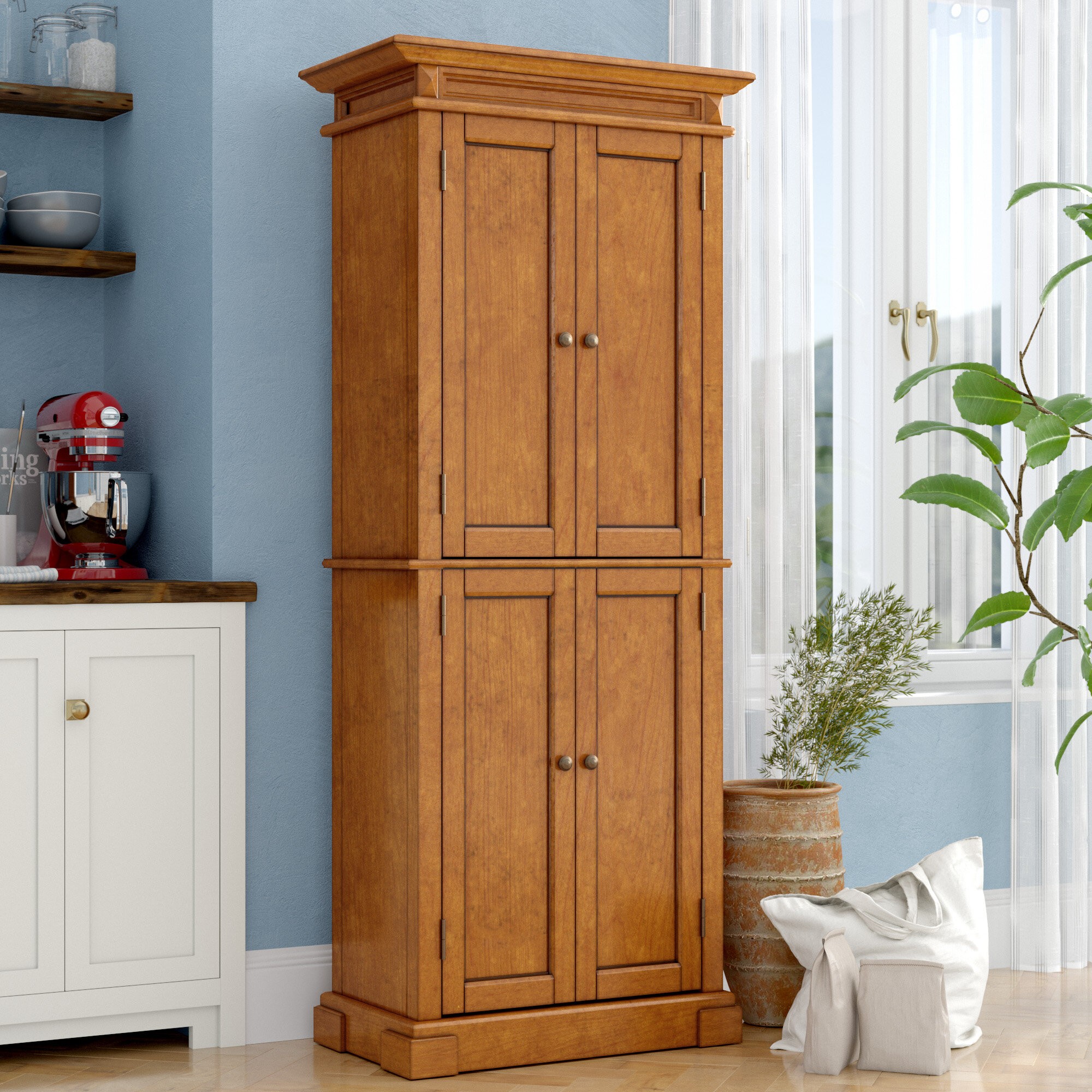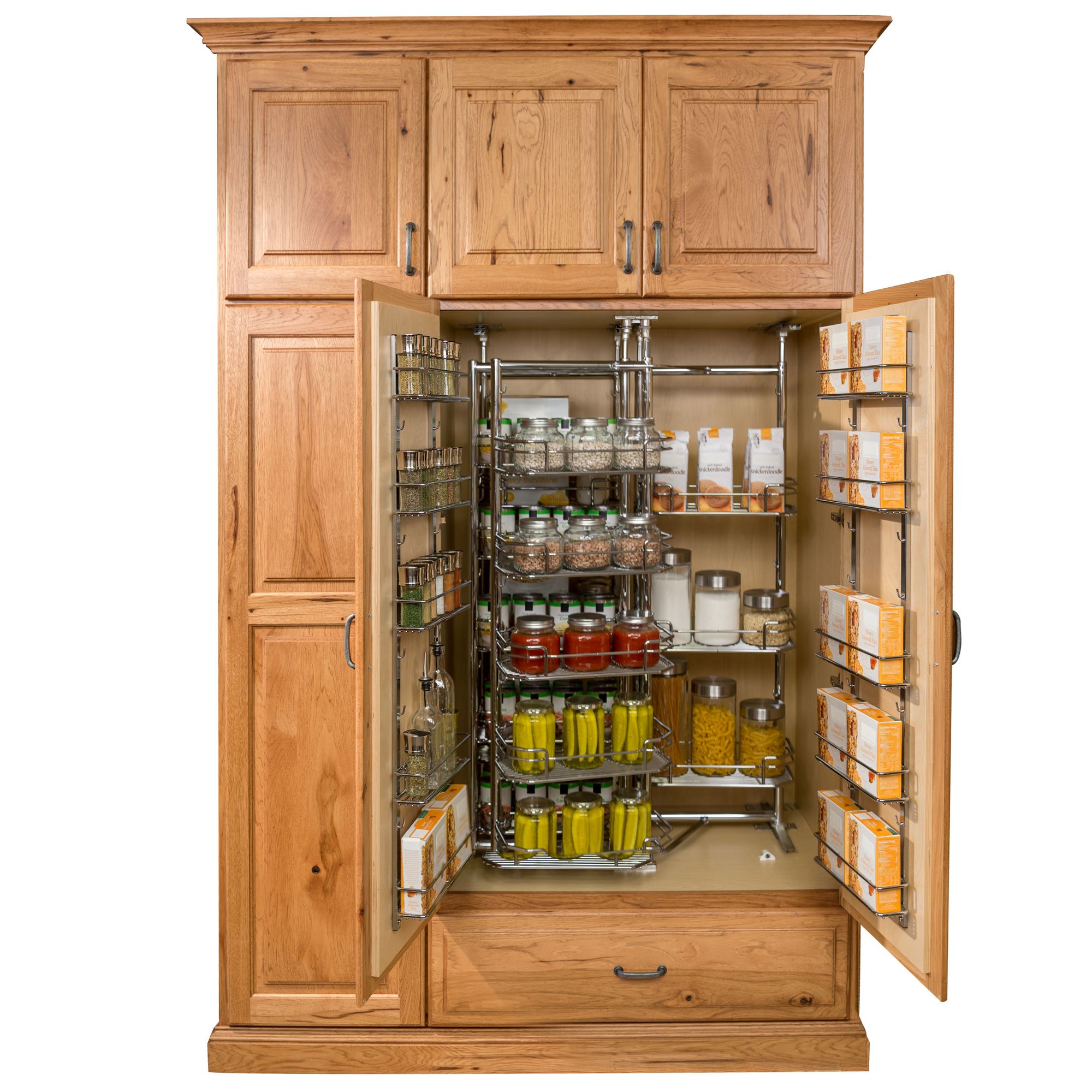Functionality and Features of Rustic Wood Pantry Cabinets

Rustic wood pantry cabinets offer a blend of aesthetic appeal and practical storage solutions for the modern kitchen. Their functionality extends beyond mere visual charm, encompassing diverse storage options, adaptable sizes, and organizational features designed to maximize space and efficiency. The choice between different cabinet configurations significantly impacts the overall functionality and integration within your kitchen design.
Rustic wood pantry cabinet – The practical aspects of these cabinets are centered around their ability to efficiently store a wide variety of kitchen items. This functionality is determined by the specific features included in the design, such as the number and configuration of shelves, drawers, and pull-out organizers. Size variations allow for customization to fit specific pantry spaces, ranging from small, freestanding units to large, built-in systems that seamlessly integrate into the kitchen layout. Organizational features, such as adjustable shelving, spice racks, and pull-out baskets, further enhance the practicality and usability of these cabinets.
Storage Solutions and Size Variations
Rustic wood pantry cabinets offer a variety of storage solutions tailored to meet diverse needs. Shelving is a fundamental feature, with adjustable shelves being particularly advantageous for accommodating items of varying heights. Drawers provide convenient storage for smaller items, while pull-out shelves and baskets optimize accessibility to items stored in deeper areas of the cabinet. Size variations are considerable; freestanding units typically range from 36 inches to 72 inches in height and 18 inches to 36 inches in width, while built-in units can be custom-designed to fit any available space. Consider a 48″ tall x 24″ wide x 18″ deep freestanding cabinet as a standard medium-sized option. A larger built-in unit might occupy an entire wall, offering significantly more storage capacity.
Comparison of Cabinet Configurations, Rustic wood pantry cabinet
The choice between freestanding, built-in, and corner units significantly impacts the functionality and integration of the pantry cabinet within the kitchen. Each configuration presents unique advantages and disadvantages.
- Freestanding Units: These offer flexibility in placement and are easily movable. They are ideal for smaller kitchens or as supplemental storage. However, they may not maximize space utilization as efficiently as built-in units.
- Built-in Units: These are custom-designed to fit specific spaces, maximizing storage capacity and seamlessly integrating with the kitchen’s overall design. However, they are less flexible in terms of relocation and require professional installation.
- Corner Units: These utilize often-wasted corner space, offering efficient storage solutions in smaller kitchens. However, accessing items in the deepest corners can be challenging, necessitating thoughtful organization.
Sample Pantry Layout
Consider a 72″ wide pantry space. A 36″ wide, 72″ tall, 24″ deep built-in rustic wood cabinet could be installed on one side. This cabinet could feature:
- Bottom section: Two 18″ deep drawers for utensils and cookware.
- Middle section: Adjustable shelves for canned goods, jars, and baking supplies. Three shelves, each 12″ high, would efficiently utilize this space.
- Top section: Adjustable shelves for less frequently used items. Two shelves, each 12″ high, would be sufficient.
On the opposite side, a 36″ wide, 72″ tall, 12″ deep open shelving unit could be added for frequently accessed items like spices, oils, and cookbooks. This combination provides ample storage while maintaining easy accessibility and visual appeal.
Care and Maintenance of Rustic Wood Pantry Cabinets

Proper care and maintenance are crucial for preserving the natural beauty and extending the lifespan of your rustic wood pantry cabinet. Regular cleaning and protection from environmental factors will ensure your cabinet remains a cherished piece in your kitchen for years to come. Neglecting these aspects can lead to premature wear, damage, and a diminished aesthetic appeal.
Cleaning and Maintenance Techniques
A regular cleaning schedule is essential to prevent dirt and grime buildup. Dust the cabinet surfaces weekly with a soft, dry cloth or duster. For more thorough cleaning, use a slightly damp (not wet) cloth with a mild, pH-neutral cleaner. Avoid harsh chemicals, abrasive cleaners, or excessive moisture, which can damage the wood finish. Always wipe surfaces dry immediately after cleaning to prevent water damage. Pay particular attention to areas prone to spills or splatters.
Protecting Against Moisture Damage
Moisture is the enemy of wood. To protect your cabinet from moisture damage, ensure adequate ventilation in your kitchen. Avoid placing the cabinet near sinks, dishwashers, or other sources of moisture. Use coasters under drinks and immediately wipe up any spills. Consider placing humidity-absorbing packets inside the cabinet, especially in humid climates, to further mitigate moisture issues. Regularly inspect the cabinet for any signs of water damage, such as warping or discoloration, and address them promptly.
Protecting Against Scratches and Wear
To minimize scratches and other wear, handle the cabinet with care. Avoid dragging heavy objects across the surfaces. Use protective pads or felt liners under heavy items stored inside the cabinet. If scratches do occur, they can often be lightly buffed out with a fine-grit sandpaper followed by reapplication of the appropriate wood finish.
Wood Finishes: A Comparison
Different wood finishes offer varying levels of protection and aesthetic appeal. Choosing the right finish depends on your preferences and the level of protection required.
| Finish Type | Pros | Cons |
|---|---|---|
| Oil (e.g., linseed oil, tung oil) | Enhances natural wood grain, penetrates deeply for protection, easy to repair, relatively inexpensive. | Requires regular reapplication, can be susceptible to water damage if not properly maintained, can darken the wood over time. |
| Wax | Provides a protective layer, enhances sheen, easy to apply and maintain, allows for some wood grain visibility. | Offers less protection than oil or varnish, needs more frequent reapplication, less durable than varnish. |
| Varnish | Creates a hard, durable, protective layer, resistant to water and scratches, long-lasting. | Can obscure the natural wood grain, more difficult to repair if damaged, application requires skill and careful preparation. |
